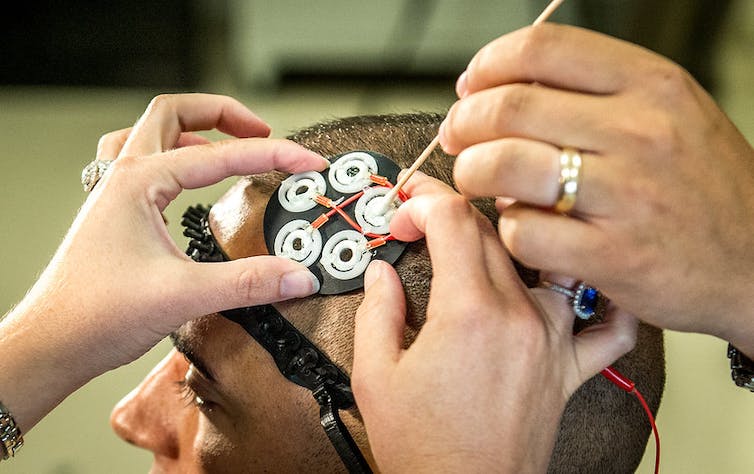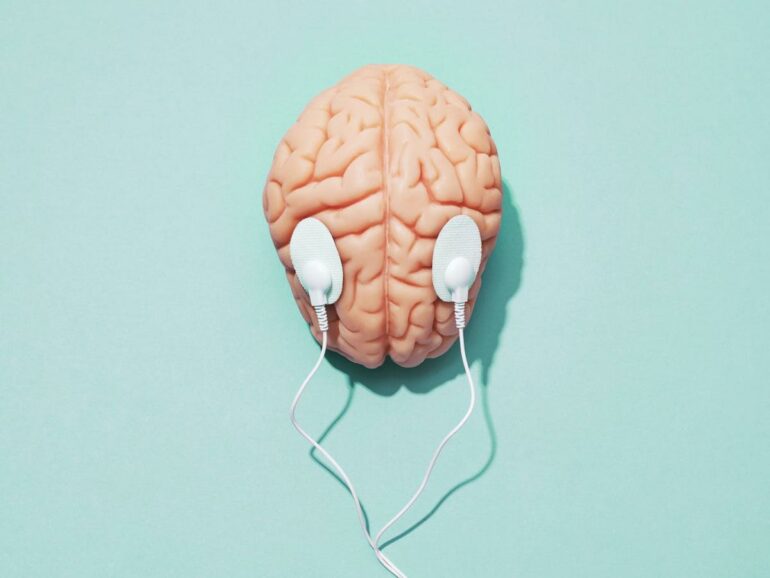Figuring out how to enhance a person’s mental capabilities has been of considerable interest to psychology and neuroscience researchers like me for decades. From improving attention in high-stakes environments, like air traffic management, to reviving memory in people with dementia, the ability to improve cognitive function can have far-reaching consequences. New research suggests that brain stimulation could help achieve the goal of boosting mental function.
In the Reinhart Lab at Boston University, my colleagues and I have been examining the effects of an emerging brain stimulation technology – transcranial alternating current stimulation, or tACS – on different mental functions in patients and healthy people.
During this procedure, people wear an elastic cap embedded with electrodes that deliver weak electrical currents oscillating at specific frequencies to their scalp. By applying these controlled currents to specific brain regions, it is possible to alter brain activity by nudging neurons to fire rhythmically.
Another type of transcranial electric stimulation, tDCS, applies a direct electrical current to the brain.
Why would rhythmically firing neurons be beneficial? Research suggests that brain cells communicate effectively when they coordinate the rhythm of their firing. Critically, these rhythmic patterns of brain activity show marked abnormalities during neuropsychiatric illnesses. The purpose of tACS is to externally induce rhythmic brain activity that promotes healthy mental function, particularly when the brain might not be able to produce these rhythms on its own.
However, tACS is a relatively new technology, and how it works is still unclear. Whether it can strengthen or revive brain rhythms to change mental function has been a topic of considerable debate in the field of brain stimulation. While some studies find evidence of changes in brain activity and mental function with tACS, others suggest that the currents typically used in people might be too weak to have a direct effect.
When faced with conflicting data in the scientific literature, it can be helpful to conduct a type of study called a meta-analysis that quantifies how consistent the evidence is across several studies. A previous meta-analysis conducted in 2016 found promising evidence for the use of tACS in changing mental function. However, the number of studies has more than doubled since then. The design of tACS technologies has also become increasingly sophisticated.
We set out to perform a new meta-analysis of studies using tACS to change mental function. To our knowledge, this work is the largest and most comprehensive meta-analysis yet on this topic, consisting of over 100 published studies with a combined total of more than 2,800 human participants.




